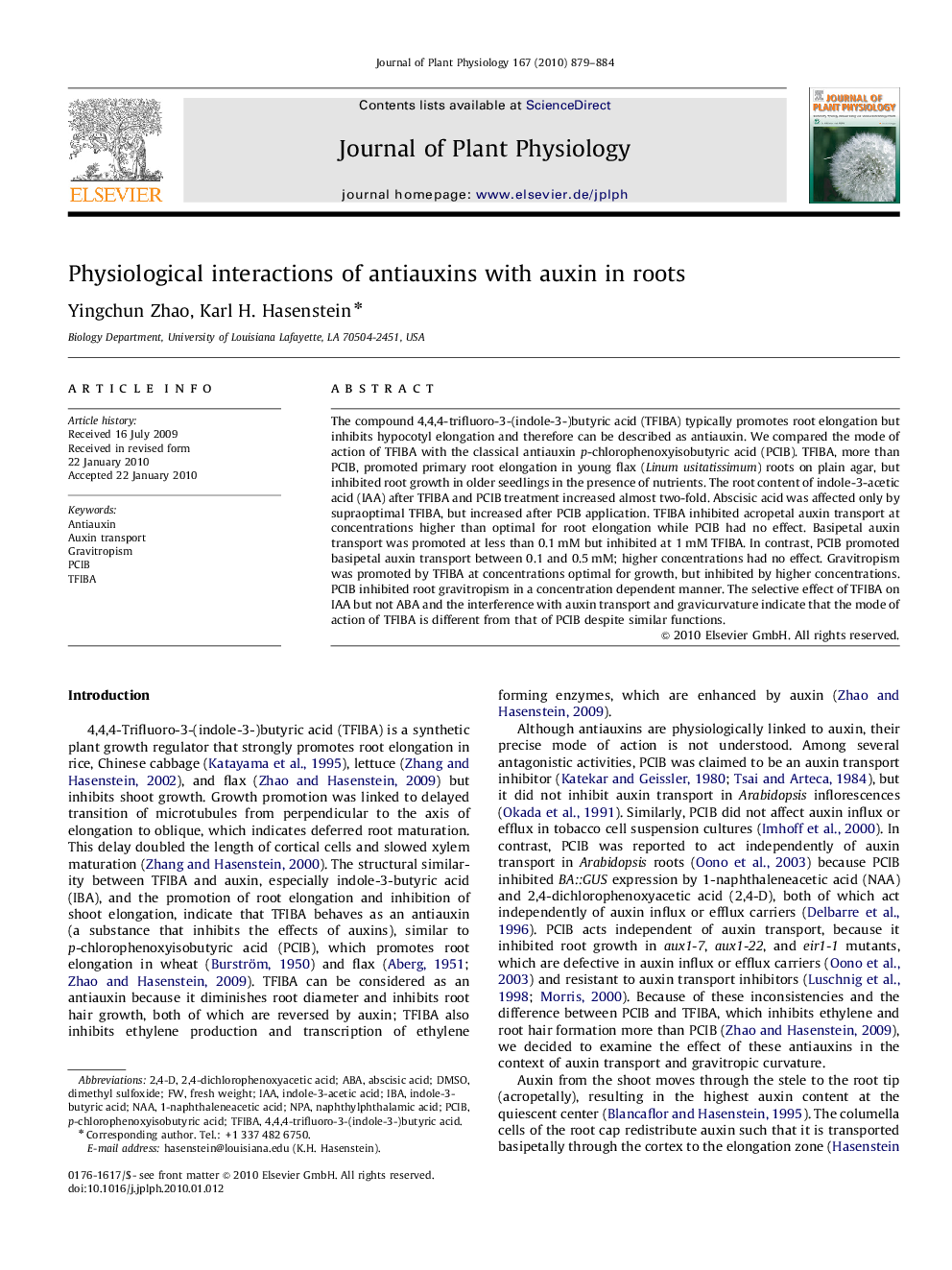| Article ID | Journal | Published Year | Pages | File Type |
|---|---|---|---|---|
| 2056848 | Journal of Plant Physiology | 2010 | 6 Pages |
The compound 4,4,4-trifluoro-3-(indole-3-)butyric acid (TFIBA) typically promotes root elongation but inhibits hypocotyl elongation and therefore can be described as antiauxin. We compared the mode of action of TFIBA with the classical antiauxin p-chlorophenoxyisobutyric acid (PCIB). TFIBA, more than PCIB, promoted primary root elongation in young flax (Linum usitatissimum) roots on plain agar, but inhibited root growth in older seedlings in the presence of nutrients. The root content of indole-3-acetic acid (IAA) after TFIBA and PCIB treatment increased almost two-fold. Abscisic acid was affected only by supraoptimal TFIBA, but increased after PCIB application. TFIBA inhibited acropetal auxin transport at concentrations higher than optimal for root elongation while PCIB had no effect. Basipetal auxin transport was promoted at less than 0.1 mM but inhibited at 1 mM TFIBA. In contrast, PCIB promoted basipetal auxin transport between 0.1 and 0.5 mM; higher concentrations had no effect. Gravitropism was promoted by TFIBA at concentrations optimal for growth, but inhibited by higher concentrations. PCIB inhibited root gravitropism in a concentration dependent manner. The selective effect of TFIBA on IAA but not ABA and the interference with auxin transport and gravicurvature indicate that the mode of action of TFIBA is different from that of PCIB despite similar functions.
